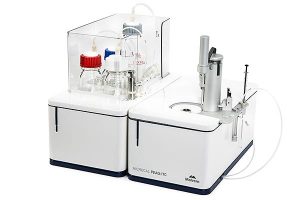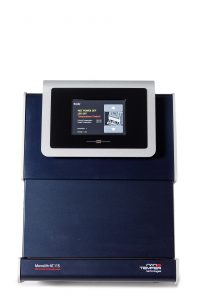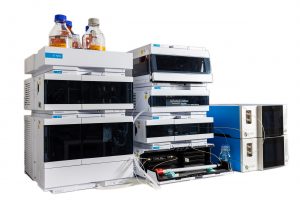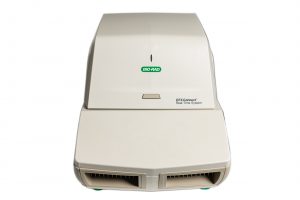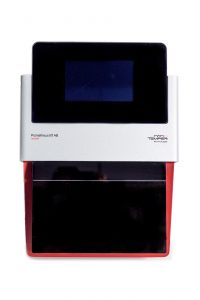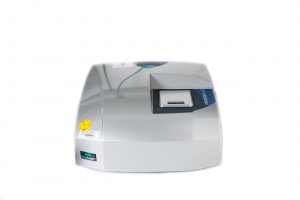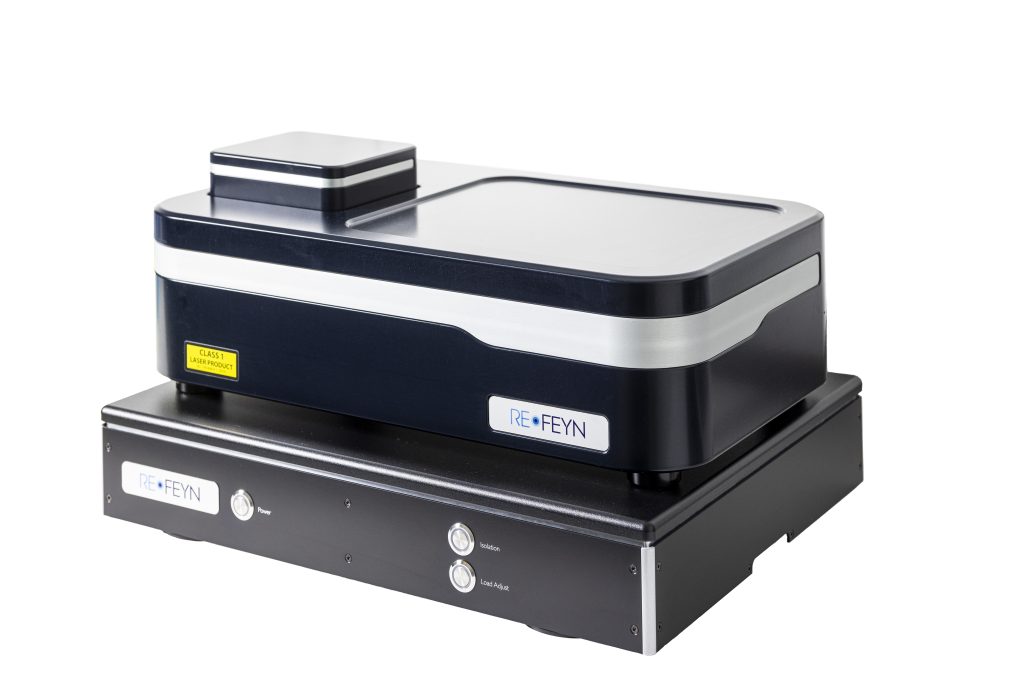Protein thermal stability can be analysed using thermal shift assays. The thermal stability of a protein is influenced both by the nature of the protein and its chemical environment (i.e. pH, salt composition and concentration, additives and the presence of various ligands) and changes can be determined by observing shifts in the protein melting temperature (Tm). Thermal shift assays are used for determining the optimal conditions for stabilizing proteins and screening of potential interactions between a protein and ligands.
We use two different techniques for performing thermal shift assays, which are Thermofluor and nano-Differential Scanning Fluorimetry (nano-DSF).
We perform our Thermofluor assays in a real-time PCR instrument. In thermofluor assays, a dye (e.g. SYPRO orange) that fluoresces upon binding to hydrophobic patches is added to the samples. As the sample is heated up over time, the protein will start to unfold and expose more hydrophobic patches, which causes an increase in fluorescence. Monitoring the change in fluorescence over time is used to determine the melting temperature Tm.
For measuring thermal stability with nano-DSF, no fluorescent dye is required. The samples are loaded in capillaries and changes in intrinsic fluorescence (Trp, Tyr) are monitored over time while the samples are heated up. Our instrument is also equipped with back-scattering optics, which allows detection of sample aggregation as well. Nano-DSF is also routinely used as a quick protein quality control step.
For determining optimal buffer conditions for protein stability, we have both the RUBIC Buffer screen and RUBIC Additive screen from Molecular Dimensions available.
Thermofluor sample requirements: protein concentration ~ 20 µM; 2 µl sample per well in a 96-well plate.
Nano-DSF sample requirements: protein concentration ~ 5 µg/ml – 150 mg/ml, dependent on the Trp – Tyr content of the protein; 10 µl of sample per capillary.
